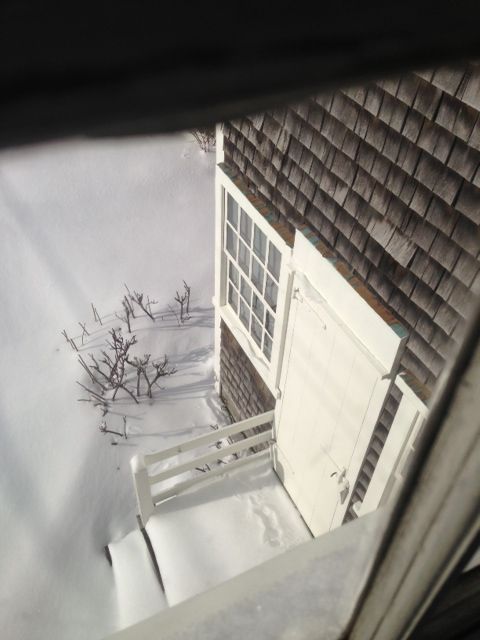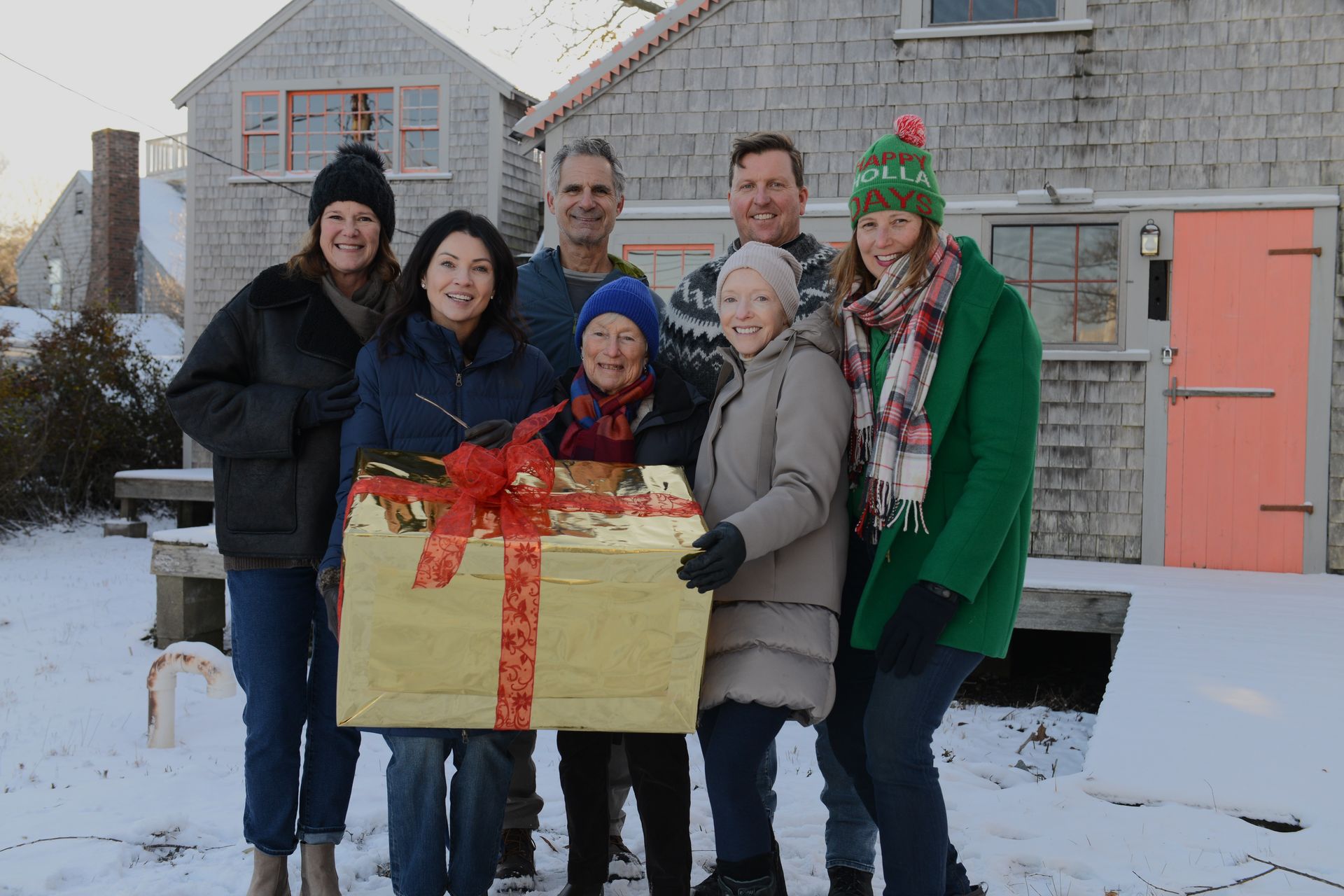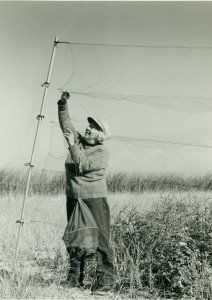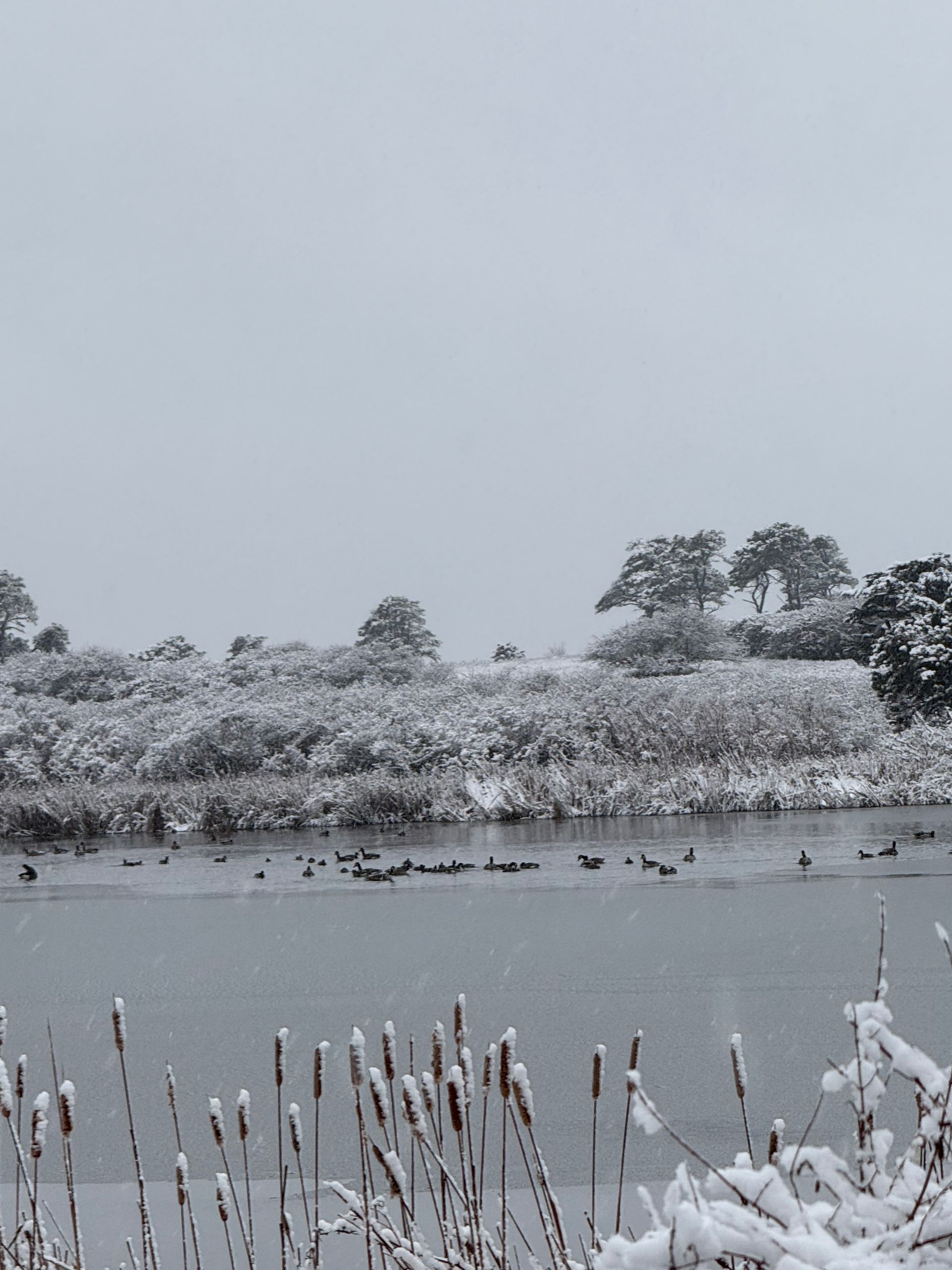Edith: My Friend and Mentor (October 29, 1915 to October 31, 2015)
Every time I see a Yellow-rumped Warbler, I hear Edith say, “I call them Butter butts.” I don’t think I ever look at one and don’t hear her say that. I don’t think I will ever not hear her say that until I don’t see one anymore.
I was probably nine or ten when I first met her. My parents took my brother and I on a Maria Mitchell Association (MMA) nature walk. I think there were probably some groans from the adults who saw two children coming along – little did they know how enthusiastic we were about this walk. Clint was there as well and my brother made some discovery that got a very excited response from Clint, a quiet and shy man.
I quite literally learned at her knee as she sat in the old black rocker in the Mitchell House. I was twelve, she was in her early seventies. What people tend to forget, or simply don’t know is that Edith Folger Andrews began her MMA career in the Mitchell House, as an assistant to the curator; herself working with Maria Mitchell’s cousins. That unique touch – that connection to the family is what I grew up with learning from Edith when I first began volunteering in the Mitchell House at age twelve. Over time, Edith became curator and served for many, many years and at several different times as curator – into 1980. She knew about the Mitchells and the House inside and out.
Yes, ornithology is more than most certainly her life, her passion, but she was also passionate about the Mitchells and the MMA. The MMA owes a great debt to her as she is largely responsible for much of the ornithological collection we have today. In the early 2000s, the MMA named the bird collection in her honor.
Edith collected the birds (found dead) on her own or from others, cleaned them, stuffed them, and preserved them. Her name is on many of the tags as the person who prepared them. She also trained others to prepare bird specimens. She was of course heavily involved in the Natural Science department – always a part of the work and research that was ongoing. And Clint was also heavily involved – helping with others to start the MMA Aquarium. Her life was very much about those two things – and her family; her husband, Clint; her daughter, Ginger; and all the birds, dogs, Barn Owls, auks, owls, and other animals that had the good fortune of being a part of her life.
I always knew Edith in connection to the Mitchell House. After all, that is my world. It was not until maybe four or five years ago that I became more involved in the bird world of Edith Folger Andrews. She and Ginger asked if I would help to organize and compile Edith’s journals – written in composition books, to small little purse sized day planners, to scribbles on an envelope if that’s all she had with her when she saw something. For several hours a week, we organized together, found all sorts of treasures, and dug through wonderful photographs. I typed up journal entries, Edith reading many of them to me aloud, took dictation about certain birding events, and learned all about the Reef Heron, Rocket, and of course dear, sweet Owlbert. I quickly learned her short-hand for different birds and got better about my own amateur birding – it helps that when you get a name or bird identification wrong the ornithologist yells at you – not meanly of course! We birded from the living room, sitting in front of the sliders looking at the feeders. Those feeders that have fed birds for over sixty years I believe. The mulberry tree where I finally got to compare a Hairy to a Downy woodpecker as they sat there together on the same tree, a Flicker there for good measure. I learned more about birds during those several hours a week over those few years than I could have imagined. I also learned more about Edith, her life in her younger years, all sorts of great stories about the old days at MMA, and some of the other things that made her tick like mallomars – which we laughed about one day when we realized they were actually older than her! My Mom and I even learned how to help a hummingbird to recover from cold when we found one one day in the driveway, lying in the gravel. Edith told me, “X and I used to put them between our bosoms to keep them warm!” My Mom and I just looked at one another. We chose the other option Edith gave us – a brown paper bag under a lamp.
This is not an easy post to write, and it’s a bit rambling. There is so much I would like to say about Edith. One thing is for sure though; she had a good and very long life that was very active almost to the end – very much like Maria Mitchell herself.
Thank you, Edith for everything you have given to all of us with brain, with heart, with hand. You have left a tremendous legacy and a path to follow. I love you.
JNLF
The step, however small, which is in advance of the world, shows the greatness of the person, whether that step be taken with brain, with heart, or with hands. – Maria Mitchell
If you would like to learn more about Edith, you should read her book:
Excerpts from a Nantucket Journal.
Recent Posts





